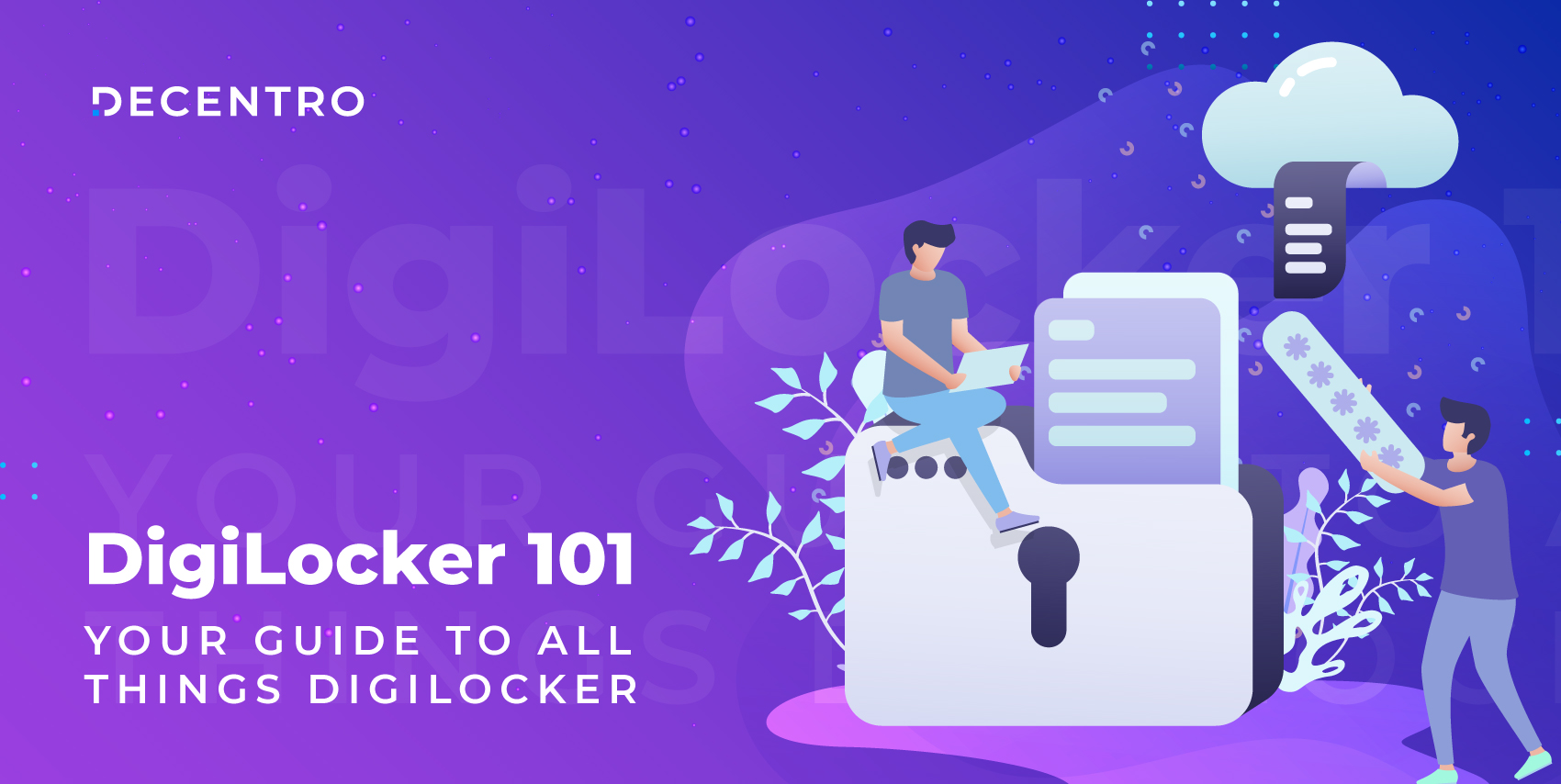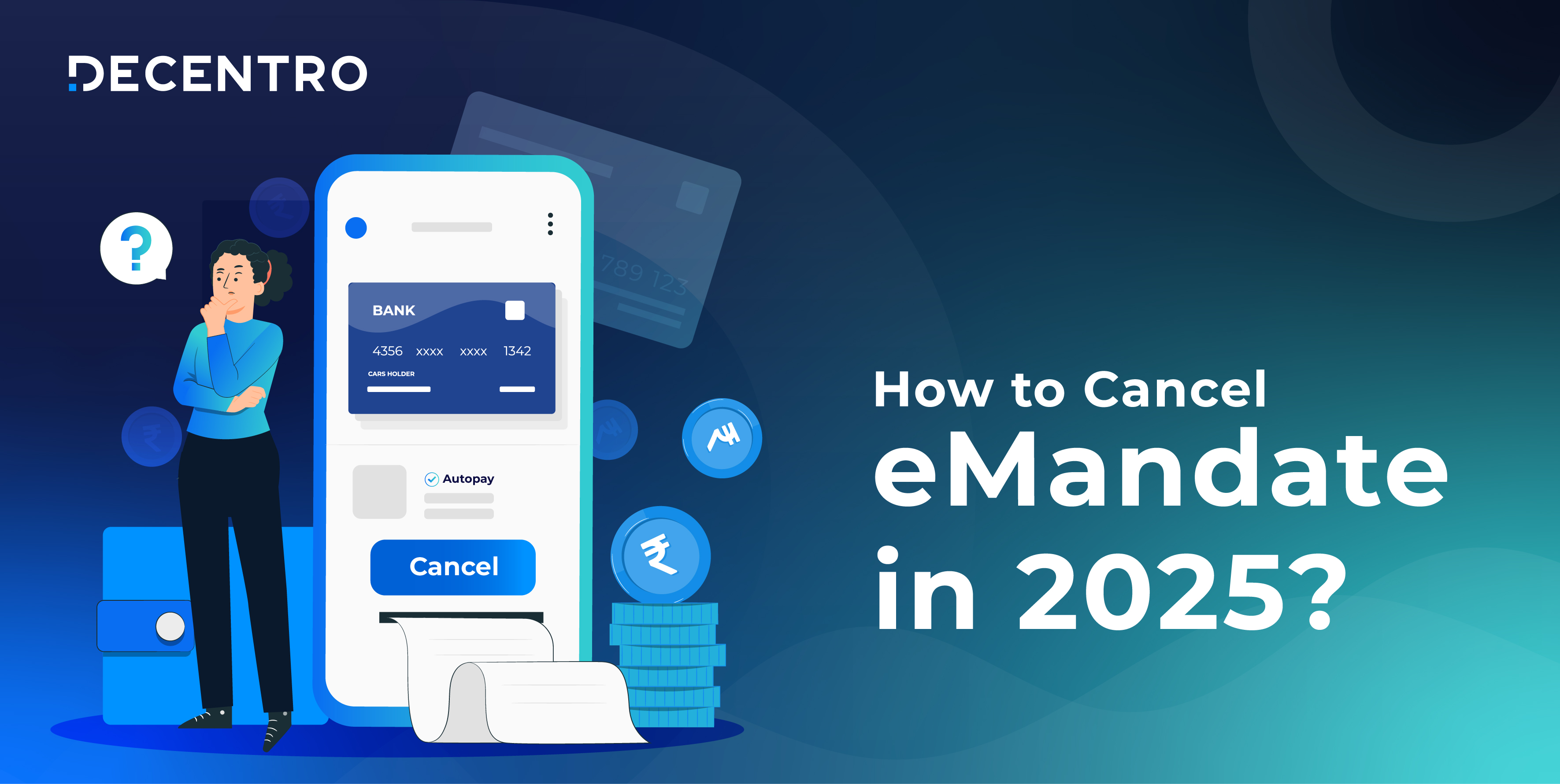Our in-depth guide covering the importance of payment reconciliation in ensuring financial accuracy. Automate the process and get started with Decentro’s Ledgers.

Decoding Payment Reconciliation: A Comprehensive Guide
Avi is a full-stack marketer on a mission to transform the Indian fintech landscape.
Table of Contents
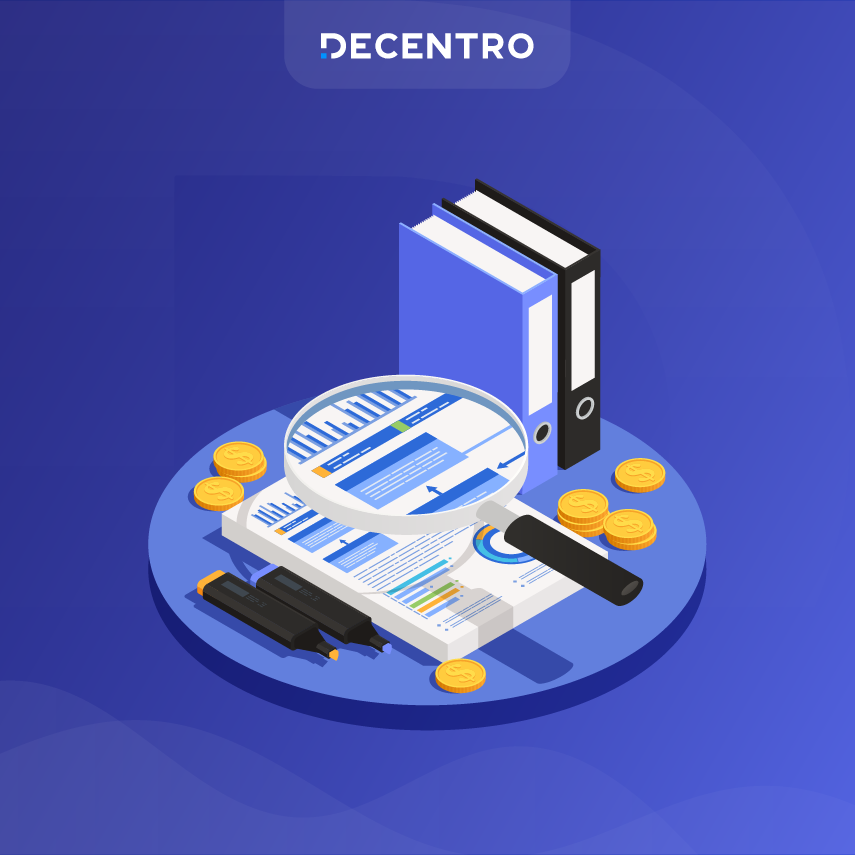
Cash flow and account management are the heartbeat of any business. Payment reconciliation is like the stethoscope, making sure every financial move lines up. It keeps your finances healthy, offering real-time control and insights.
In research conducted by PWC, a whopping 25% of the finance department’s resources are directly or indirectly tied to payment reconciliation processes. Also, 40% of manual tasks can be effectively automated and help release personnel for more value-driven activities. It is, therefore, critical that businesses adopt automated payment reconciliation.
In this comprehensive guide, we will explore the best practices and strategies for mastering payment reconciliation and the benefits of automation in streamlining the process.
What is Payment Reconciliation?

In everyday terms, payment reconciliation is like keeping a score on your chequebook. It helps you track all your money coming in and going out so you can stay on top of your finances, make smarter decisions, and keep your cash flow healthy.
While disparities are common, factors such as payment timing and delayed transactions can directly impact your business’ bottom-line performance.
In today’s competitive business landscape, staying ahead of the game requires a robust bookkeeping strategy and efficient financial management. This is where payment reconciliation plays a pivotal role.
Types of Payment Reconciliation
There can be different types of payment reconciliation depending on the type of record and transaction.
- Bank Reconciliation: Bank reconciliation is like making sure your personal chequebook matches your bank statement. It’s an important financial practice that helps businesses keep their own financial records in sync with what the bank says.
- General Ledger Reconciliation: In Ledger Reconciliation, businesses can double-check their main financial record (the general ledger) to make sure it lines up with the smaller, detailed records (sub-ledgers). This helps ensure that all transactions are accurate and keep the main financial record in tip-top shape.
- Payroll Reconciliation: Payroll reconciliation is like double-checking all the numbers in your employee paychecks. It involves looking at things like wages, deductions, and taxes and making sure they match up with what’s in the bank and other records. The main goal is to make sure employees get paid right and that all the necessary taxes and deductions are accounted for accurately.
- Accounts Receivables/ Accounts Payable Reconciliation: Reconciliation is important for both accounts receivable and accounts payable. For the ‘money coming in,’ we check that what customers pay and any credit notes match the bills we send them. For ‘money going out,’ we make sure what we owe suppliers, including invoices and payments, lines up with our records.
- Credit Card Reconciliation: Credit card reconciliation is like ensuring your credit card bill matches what you spent. You check your credit card statement and compare it with your own records. It also involves checking the records against your bank statement to see the money you paid to cover those credit card charges.
How does Payment Reconciliation work?
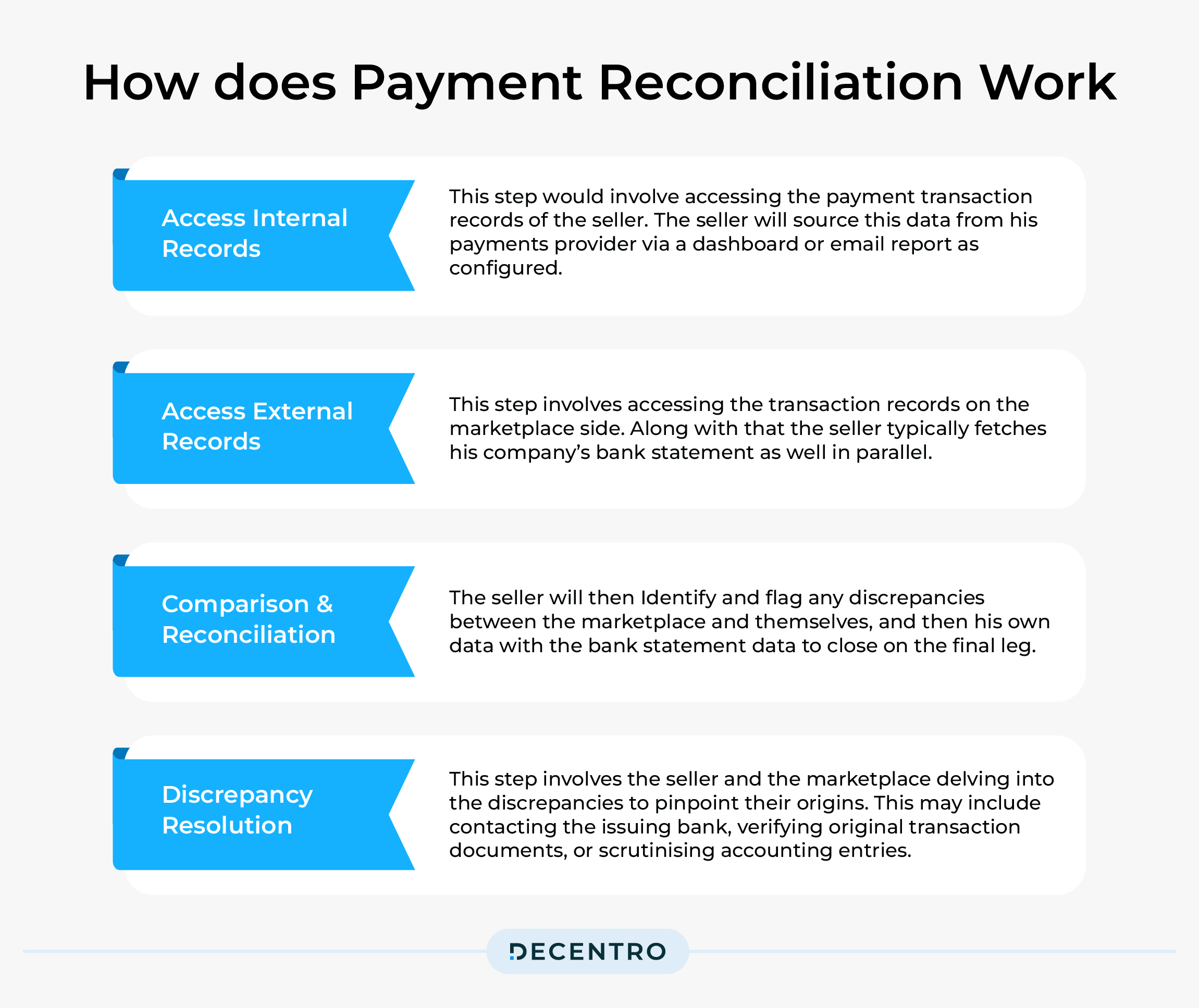
Payment reconciliation can involve a multi-step process with substeps, whether managed manually or automatically. To understand this better, let’s take the example of a seller on an online marketplace. Reconciling payments here would involve 4 steps essentially:
- Access Internal Records: This step would involve accessing the payment transaction records of the seller. The seller will source this data from his payments provider via a dashboard or email report as configured.
- Access External Records: This step involves accessing the transaction records on the marketplace side. Along with that the seller typically fetches his company’s bank statement as well in parallel.
- Comparison and Reconciliation: The seller will then Identify and flag any discrepancies between the marketplace and themselves, and then his own data with the bank statement data to close on the final leg.
- Discrepancy Resolution: This step involves the seller and the marketplace delving into the discrepancies to pinpoint their origins. This may include contacting the issuing bank, verifying original transaction documents, or scrutinising accounting entries. Once the causes are identified, they have a process to rectify or update these entries.
Why is Payment Reconciliation Important?
Payment reconciliation isn’t just important; it’s the guardian of your financial records. It spots errors, discrepancies, and even fraud so that you can act quickly.
And it’s not just about accuracy; reconciliation offers a clear financial picture for smarter decisions and staying on the right side of the regulations.
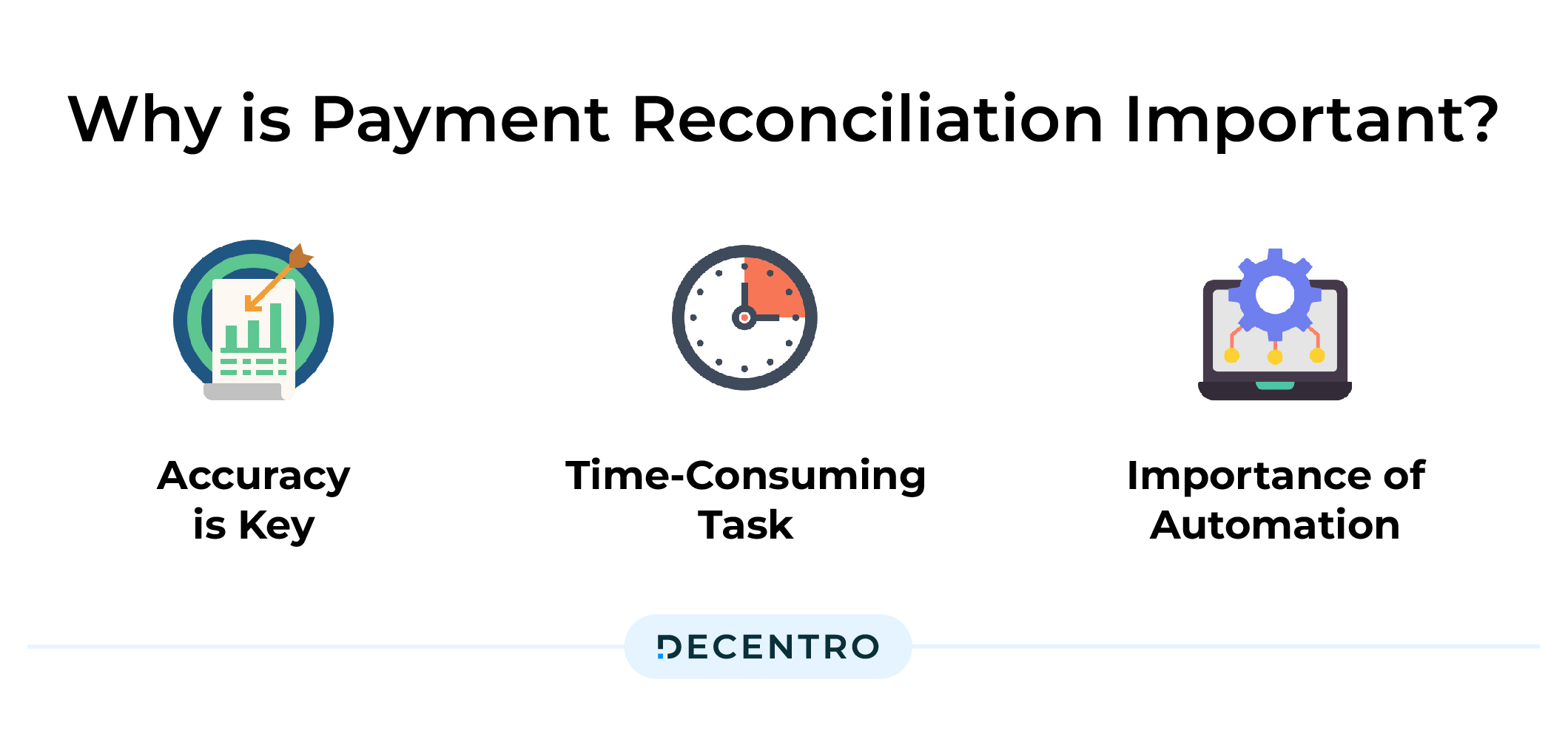
Here are some key points to understand about reconciling payments:
- Accuracy is Key: Accurate financial records are essential for assessing the health of your business. Any discrepancies can lead to financial losses or regulatory issues.
- Time-Consuming Task: Traditionally, payment reconciliation has been time-consuming, involving manual data entry and cross-checking.
- Importance of Automation: Automation can significantly expedite and improve the accuracy of the reconciliation process.
In the e-commerce world, accurate financial records are the lifeline of your business. Traditionally, sorting out payments involved hours of manual labour double-checking entries against bank statements and order records.
But there’s a game-changer: automation. With smart solutions, e-commerce businesses can now speed up reconciliation. These tools cross-reference payment transactions with bank statements and order records in a snap, leaving no room for mistakes. This modern approach saves time and guarantees accuracy, offering peace of mind while e-commerce companies can stay focused on growth and customer satisfaction.
Best Practices for Reconciling Payments
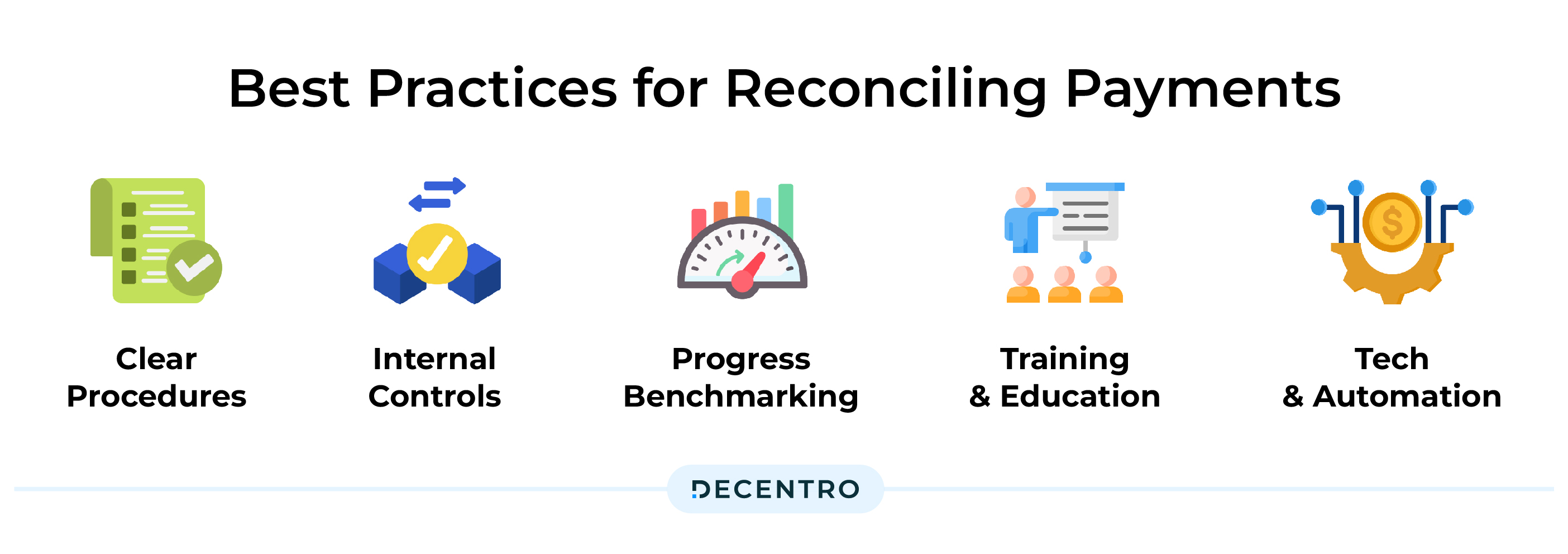
According to a recent analysis, about 75% of businesses state that e-commerce platforms have added 5-7 extra staff days of manual bookkeeping work each month. In contrast, automated reconciliation can reduce this error rate to as low as 0.5%.To ensure seamless and accurate payment reconciliation, it’s vital to follow some key best practices:
- Clear Procedures: Start by setting clear and easy-to-follow reconciliation procedures. Document the steps, responsibilities, and timelines. This reduces errors and serves as a roadmap for training and improvement.
- Internal Controls: Put effective internal controls in place. They help prevent errors and irregularities. This might involve separating duties, using authorization processes, and regularly reviewing reconciliation activities.
- Progress Benchmarking: Compare your reconciliation practices with industry benchmarks. Look for ways to improve and make your system even better.
- Training and Education: Keep your accounting staff on top of their game. Training and ongoing education are key. This covers procedures, internal controls, software tools, and industry trends.
- Tech and Automation: Embrace technology and automation. These tools make reconciliation faster and more accurate. They can automate data retrieval, matching, and reporting and even link up with external systems like banks and payment processors to reduce manual work.
Benefits of Automating Payment Reconciliation
Let’s dive into how automation can be a game-changer when it comes to payment reconciliation. Here’s why it’s a smart move:
Efficiency and Accuracy Boost
Automation takes away the grunt work, making reconciliation faster and more precise. It zips through data, matches transactions, and creates reports without the usual human errors. This leaves you with time and focus for the stuff that really matters.
Operational Smooth Sailing
Imagine the time and resources saved when you automate payment reconciliation. Manual processes can be real drags, especially for businesses with loads of transactions. Automation means no more tedious data entry, no more repetitive tasks, and no more paper shuffling. That’s operational efficiency.
Rock-Solid Security and Compliance
Automation tools often come with built-in security features like data encryption and access controls. This means your financial info stays confidential and tamper-proof. Plus, it’s a win for regulatory requirements. You get an audit trail, accurate records, and speedy reporting – all in one package.
Smart Moves with Real-Time Insights
Automation doesn’t just speed things up; it also hands you real-time insights into your financial data. With fresh and reliable info at your fingertips, you can make better decisions, spot trends, and seize opportunities with confidence.
How Decentro’s Ledgers can help you build an effective data management strategy?
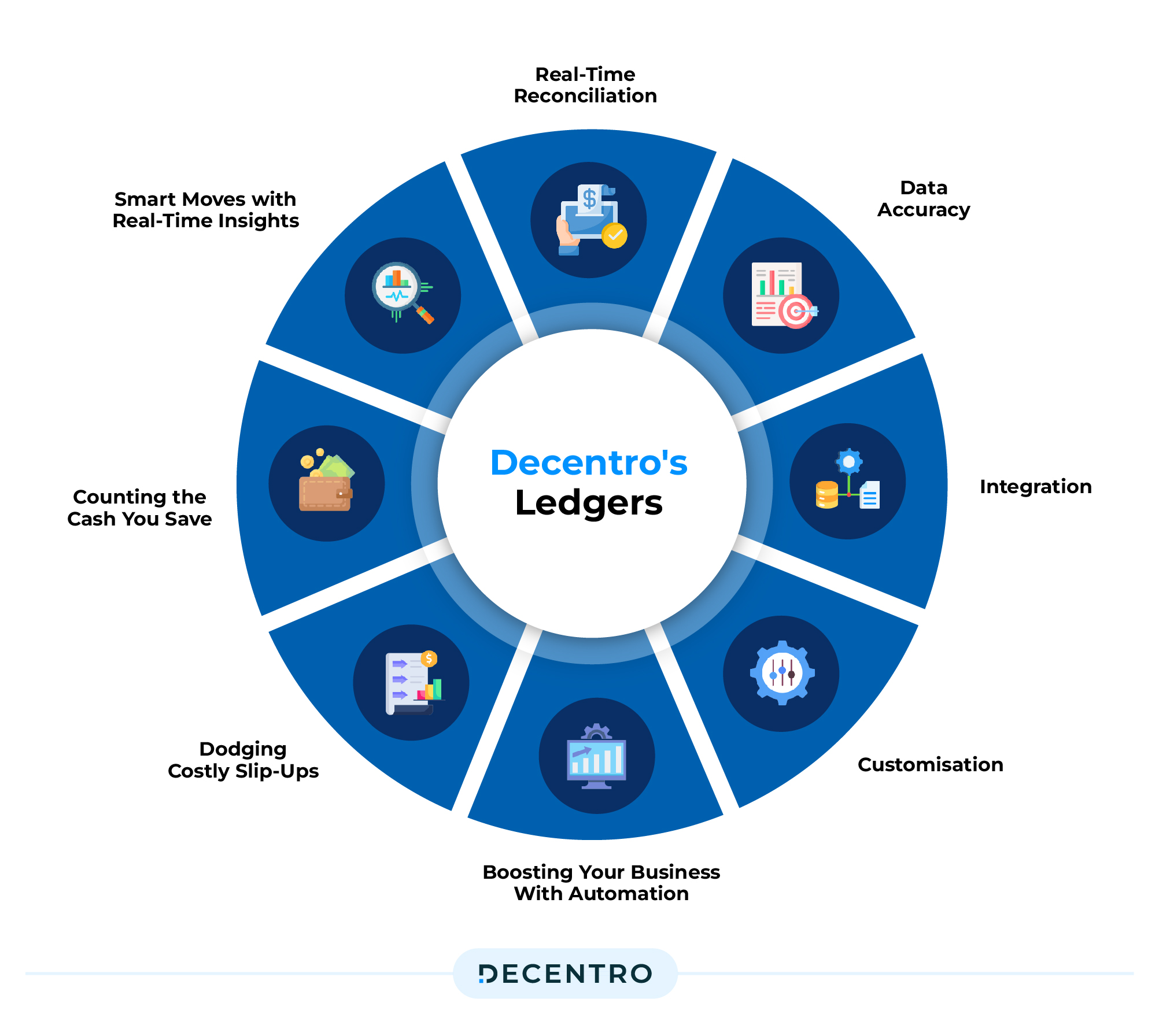
Decentro’s Ledgers is a game-changer for businesses looking to streamline their payment reconciliation process. Our innovative solution leverages the power of automation to simplify and expedite reconciliation tasks. Some of its key features are:
- Real-Time Reconciliation: Decentro’s Ledgers API enables real-time reconciliation, ensuring that your financial data is always up to date. This is particularly valuable for businesses with high transaction volumes.
- Data Accuracy: The solution minimises human error by automating data entry and cross-referencing, resulting in more accurate financial records.
- Integration: It seamlessly integrates with your existing accounting and infra systems, making it easy to incorporate into your workflow.
- Customisation: Decentro understands that every business is unique. Ledgers allow for customisation to match your specific reconciliation needs.
Using Decentro’s Ledgers API, organisations can reap a number of benefits:
- Boosting your business with automation: Imagine having more time for your strategy team to focus on growing your business. Automation in reconciliation does just that – it’s like giving your team a productivity boost, leading to increased revenue.
- Dodging Costly Slip-Ups: We all know human errors can be expensive. With Decentro’s Ledgers, you’ll significantly cut the chances of costly mistakes in your financial records. This isn’t just about your books; it’s about keeping your revenue strategy on track.
- Counting the Cash You Save: Manual reconciliation can burn through your labour budget. But with automation, you’re not just saving time but money, too. Plus, it’s like an insurance policy against financial penalties due to errors.
- Smart Moves with Real-Time Insights: Access to accurate financial data empowers your teams. They can make data-driven decisions, spot trends, and confidently jump on opportunities. It’s the recipe for strategic success.
How does it work
Decentro’s Ledgers module can help you maintain a parallel ledger to keep track of both the payments layer and the customer activity on your platform, as well as orders. The ledger layer can maintain data across these layers.
- Journal: A set of accounts created for a specific use case. A journal has multiple ledgers.
- Ledger: The account from which transactions are credited or debited can have multiple entries (transactions).
- Transaction: The actual transactions, which can be any scenario like virtual account credits, virtual account debits, orders placed, etc.
For example, a food aggregator app, EatsEase, works with 3 cloud kitchens, BiryaniBliss, WokBox and PastaPalate, which work with 3 vendors under their umbrella each. EatsEase should be able to auto-compute commissions and distribute payment accordingly for fund distribution. The ledgers should also be queryable so that all the data and analytics can be sourced instantly.
For example, if an INR 100 order is placed on EatsEase belonging to PastaPalate, 25% of the funds should be transferred to EatsEase & the remaining 75% to PastaPalate and subsequently distributed to the vendors under PastaPalate based on how many SKUs were sourced and distributed.
Using Decentro’s Ledgers, the flow can work in the following way:

- Onboarding: EatsEase onboard PastaPalate as a customer on their platform and assigns them a virtual account for payments.

- Flow of Money: Once PastaPalate is onboarded and their virtual account becomes functional, every transaction made by them is recorded on Ledgers, and the corresponding data is available to EatsEase, which can now utilise Ledgers as the single source of truth.

- Ledger Entries: The transaction records are now recorded on the EatsEase Ledger Journal for both payment and order tracking.
- The user places an INR 100 order on EatsEase. Fields for Order ID, amount, marketplace, and brand fields were created for tracking all relevant information on the ledger.
- + INR 100 is added to the EatsEase master order ledger.
- EatsEase commission is configured as 25% on PastaPalate.
- INR 25 (25% of INR 100) is transferred to EatsEase master ledger.
- The remaining INR 75 is transferred to the PastaPalate master ledger.
- PastaPalate ledger = Vendor 1 balance + Vendor 2 balance.
- PastaPalate can then use the dashboard for data viewing at two levels:
- EatsEase (Platform Level): EatEase will have a view across all the transactions at the aggregator (cloud kitchens) level, seller (brands) level and marketplace level.
- PastaPalate (Cloud Kitchen Level): The cloud kitchen will have a view of transactions limited to the vendors (brands) that it aggregates and marketplaces its brands sell.
- Data Viewing:
- Platform level
- A view (Table 1) of all the ledger accounts with a filter for journals.
Fields:
- Ledger account id
- Ledger account name
- Currency
- Ledger account balance
- Status
- A view of all the transactions with journal and ledger accounts with marketplace and brand filters.
Fields:
- Order id
- Order Amount
- Marketplace
- Amount paid to marketplace
- Brand
- Amount paid to brand
- A capability on a dashboard using which the platform can set business logic for fund distribution.
Fields:
- Marketplace
- Name of marketplace
- Fund distribution percentage
- Add new marketplace
- Aggregator
- Name of aggregator (cloud kitchen)
- Name of the seller (brand)
- Fund distribution percentage
- Add a new aggregator (cloud kitchen)
- Add new seller (brand)
- Cloud Kitchen Level
- A view of all the seller (brand) ledger accounts with a filter for sellers.
Fields:
- Ledger account id
- Ledger account name
- Currency
- Ledger account balance
- Status
- A view of all the transactions with journal and ledger accounts with marketplace and brand filters.
Fields:
- Order id
- Order Amount
- Marketplace
- Amount paid to marketplace
- Brand
- Amount paid to brand
- A capability on a dashboard using which EatsEase can set business logic for fund distribution among the cloud kitchens.
Fields:
- Marketplace
- Name of marketplace
- Fund distribution percentage
- Add new marketplace
- Aggregator
- Name of the seller (brand)
- Fund distribution percentage
- Add new seller (brand)
In this way, any business can define custom flows for their use case (like a food aggregator in the above flow) and utilise Decentro’s Ledgers to track payment and account reconciliation while driving 20% lesser operational efforts and improving cash flow management.
Wrapping Up
Picture this: Payment reconciliation isn’t just a box to tick; it’s your key to nailing down accurate financial records, staying on the right side of the law, and making those game-changing decisions. With Decentro’s Ledgers module, it’s like having a magic wand for your financial records.
Discover the 10X Difference.
Our Ledgers module can boost your reconciliation process, boosting your bottom line. It’s not just a claim; we’ve helped a major eyewear aggregator in India streamline their loyalty and rewards system, revolutionising their entire business.
Ready to Dive In?
If this sounds like the solution your business needs, dive in and explore our offerings. We’ve cracked the code for payment reconciliation in the Indian market, and thanks to Decentro’s Ledgers module, it’s now a breeze.
So don’t wait—make the leap today and watch your bottom line soar with the ledger of success firmly by your side.

